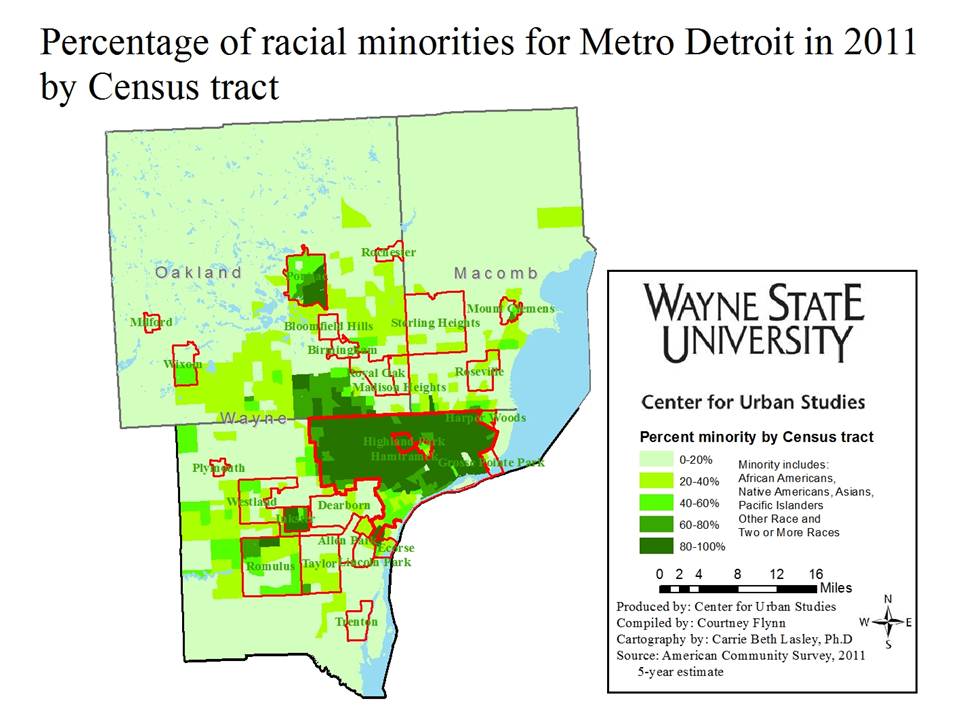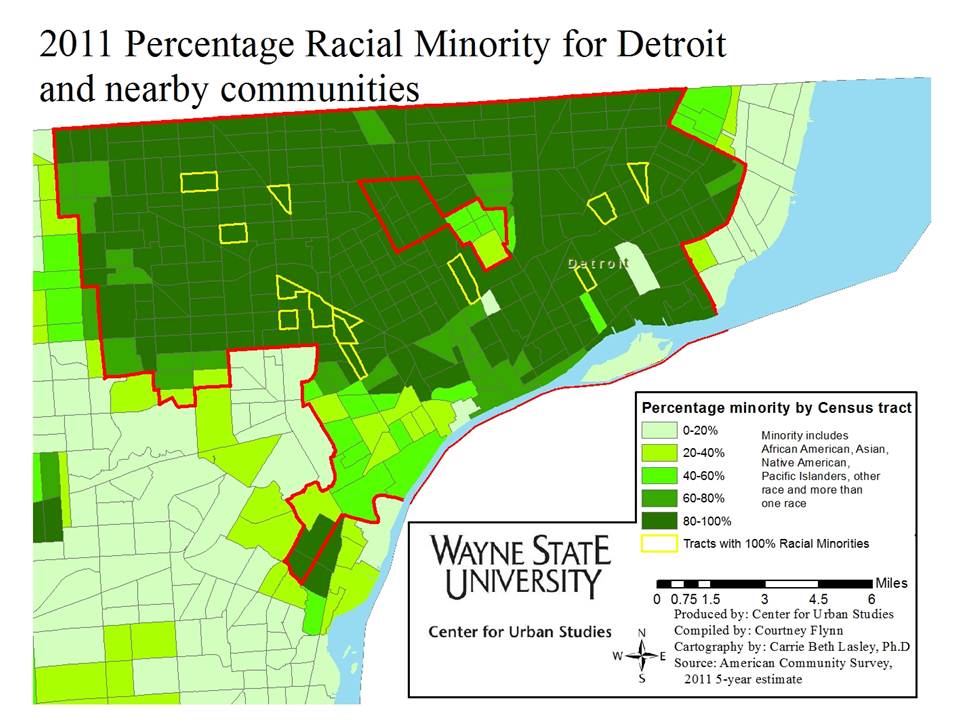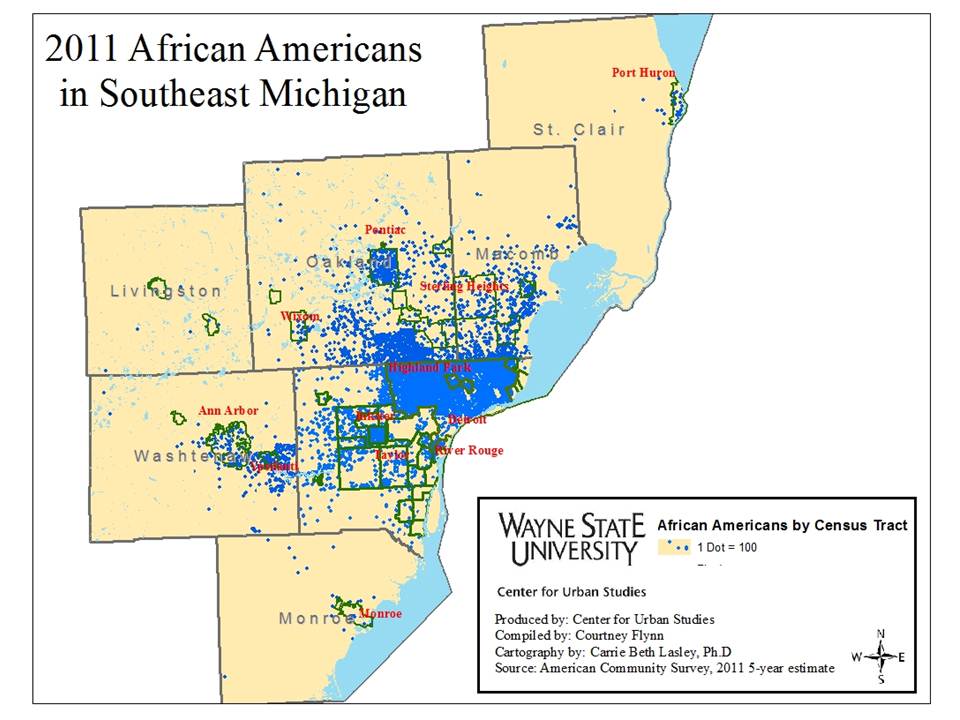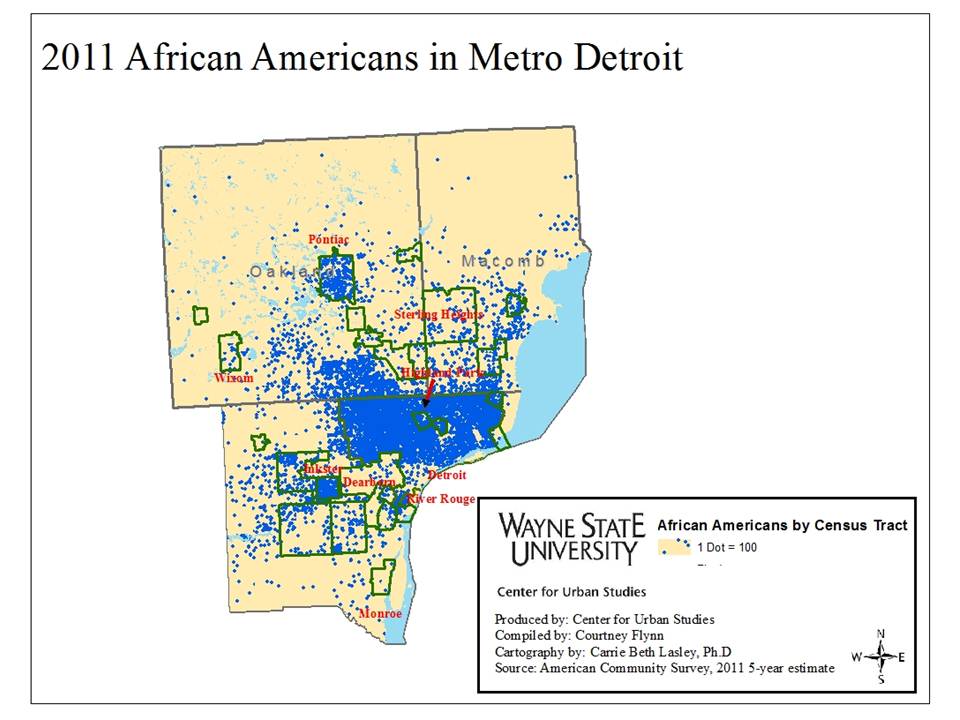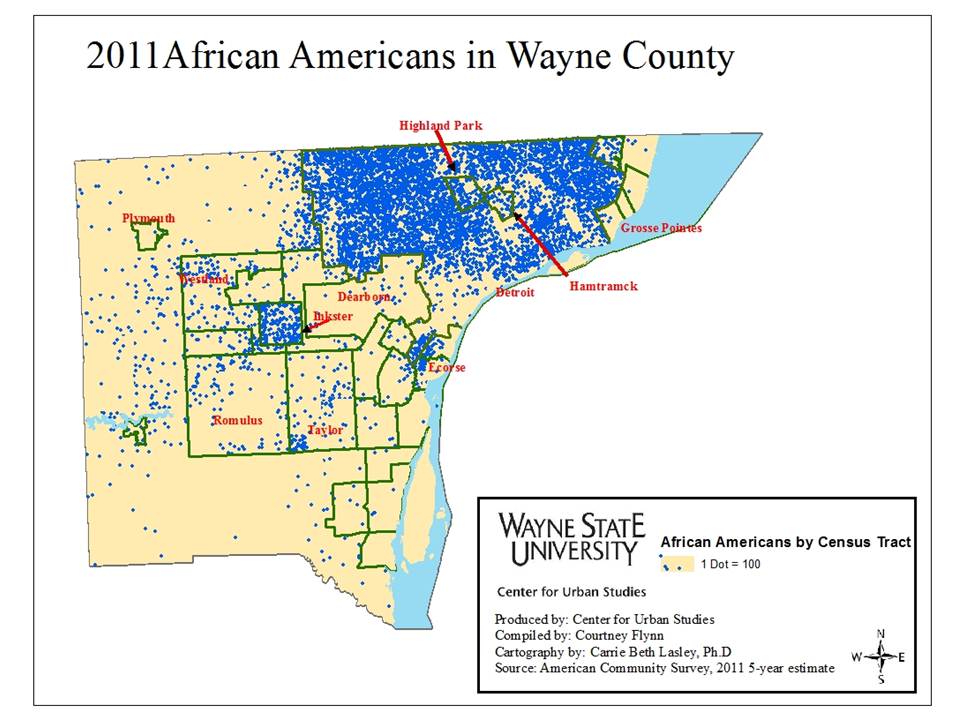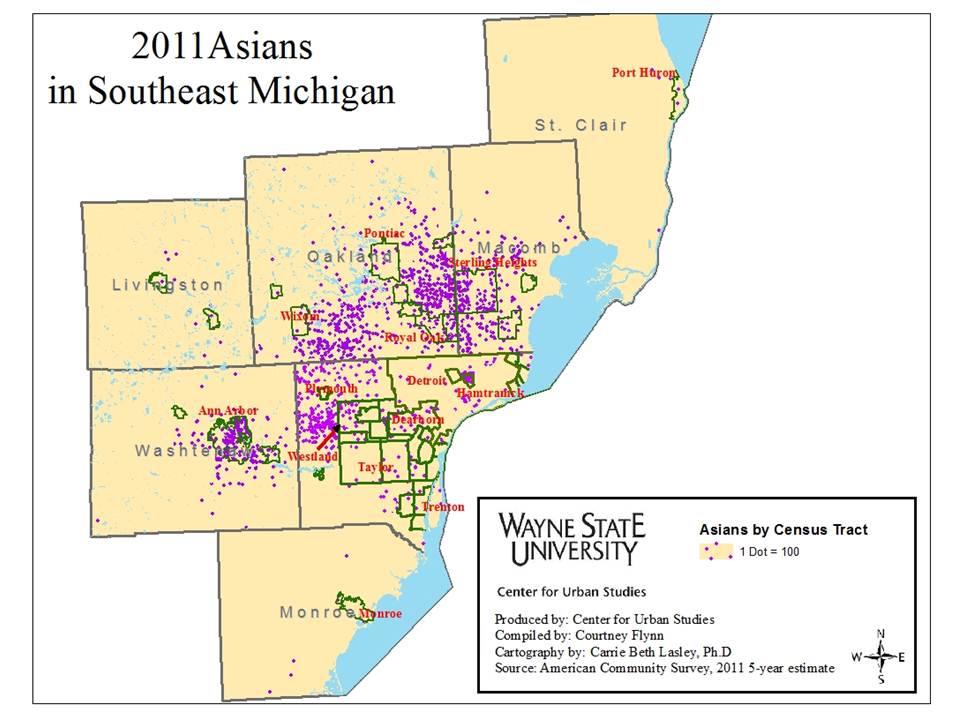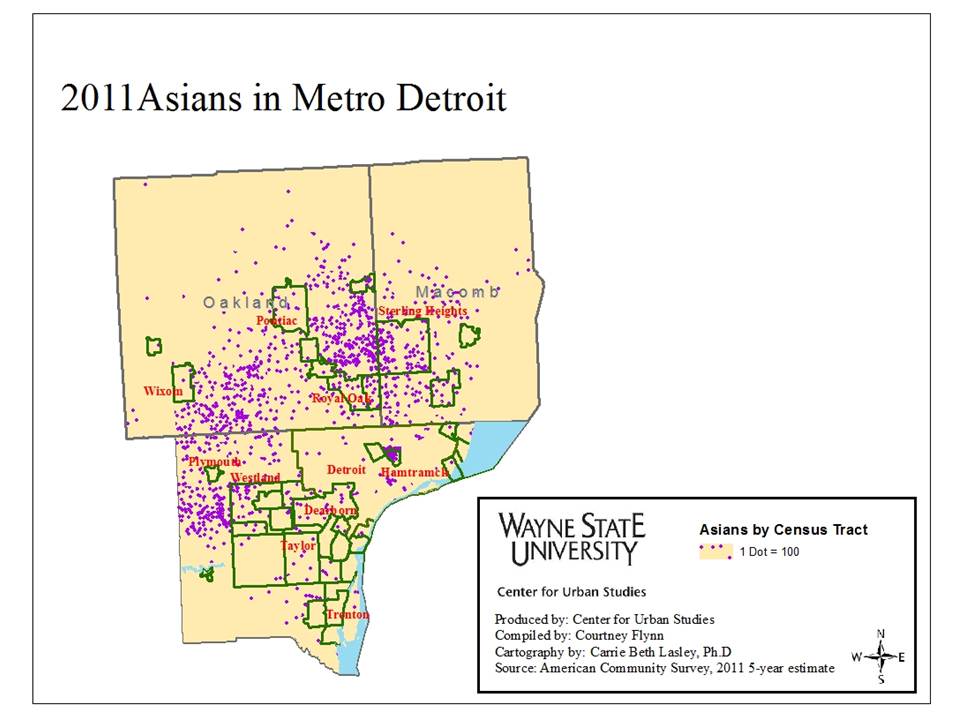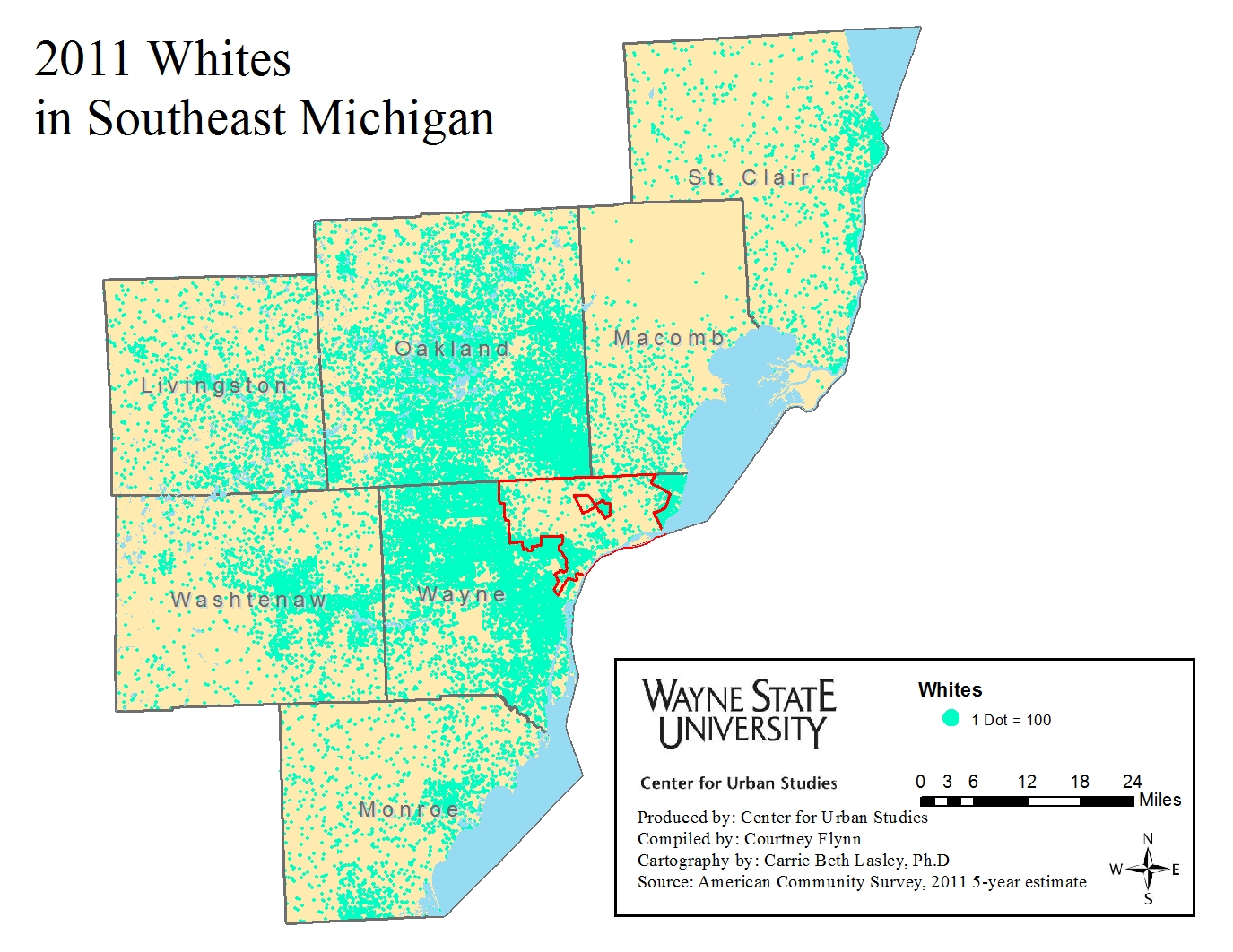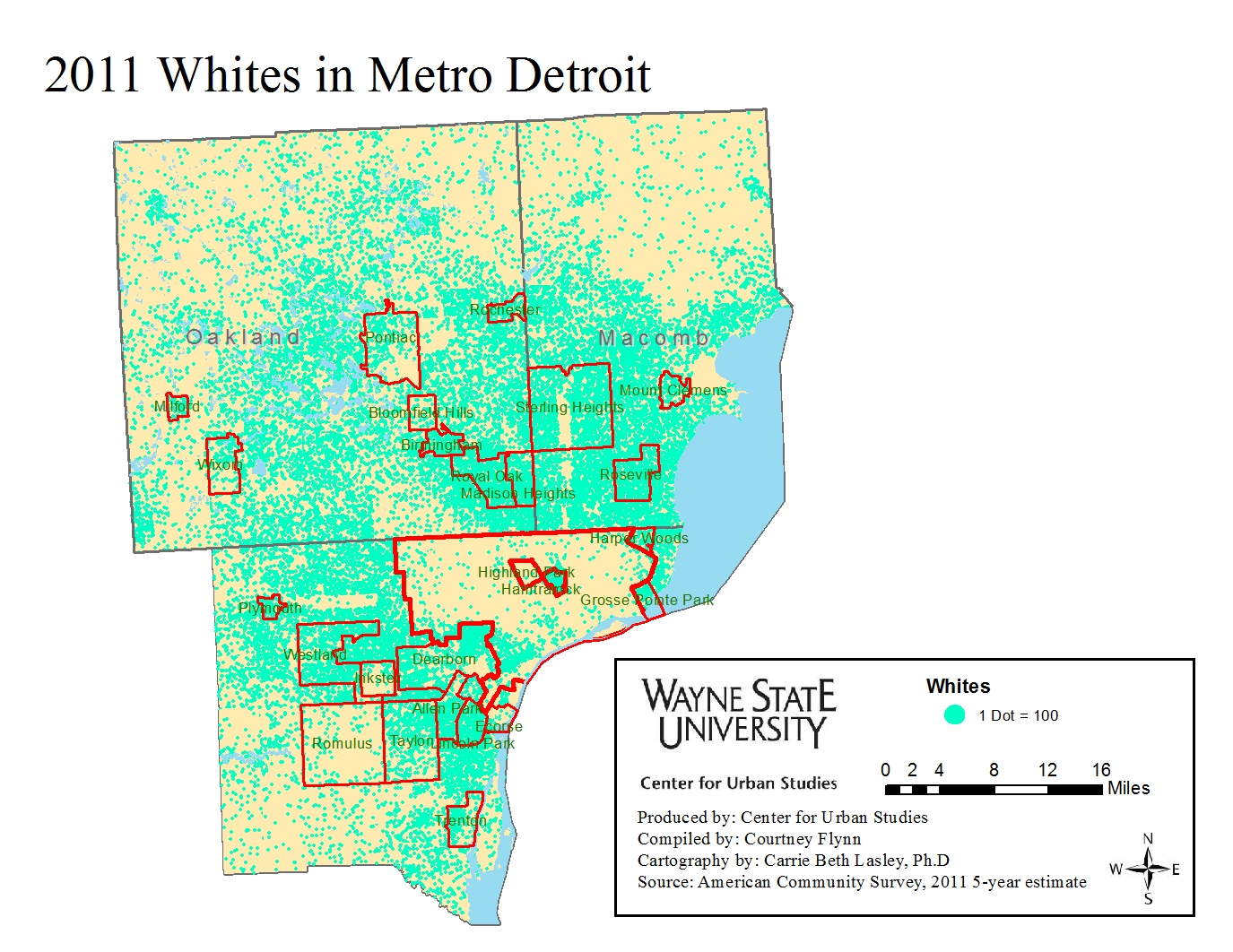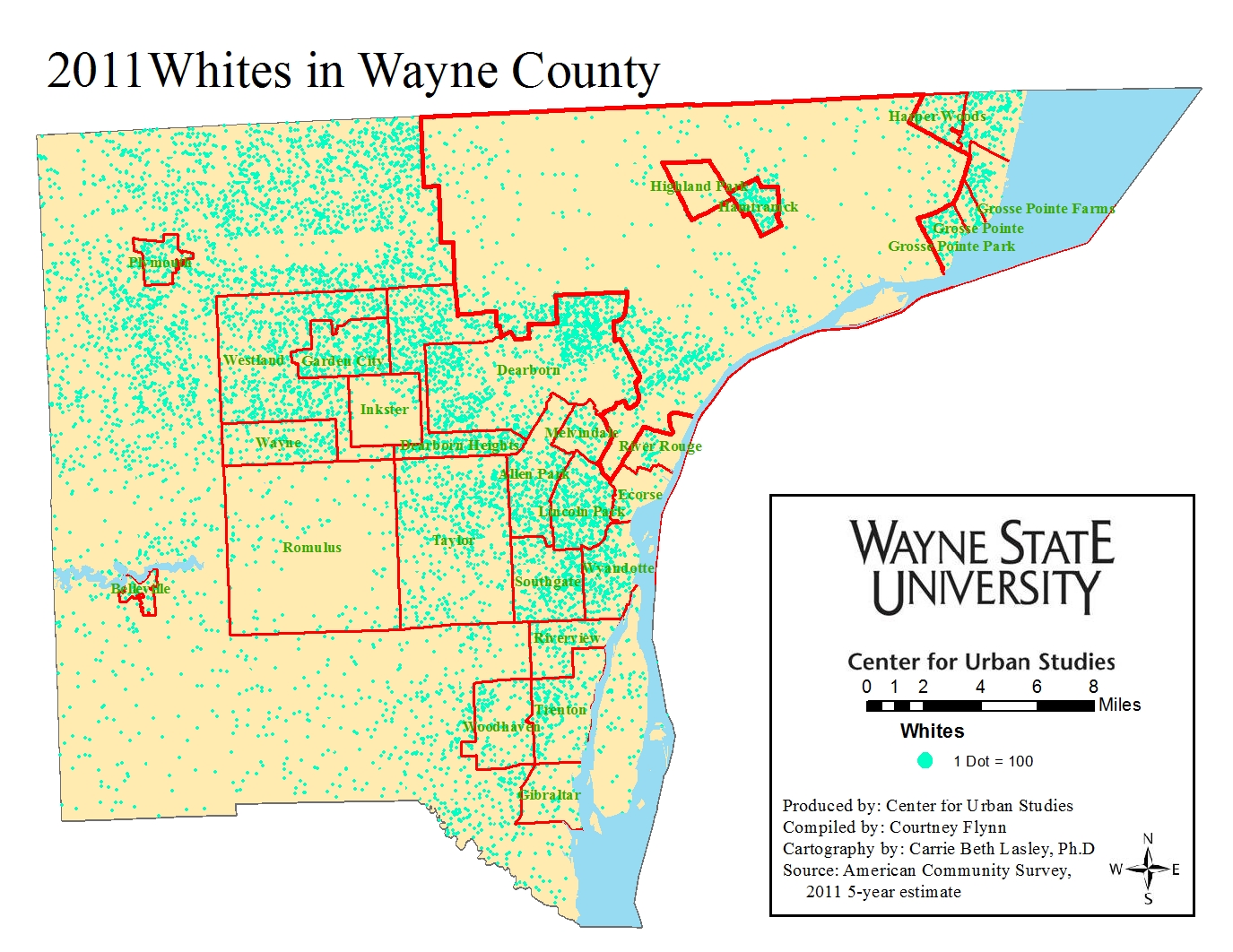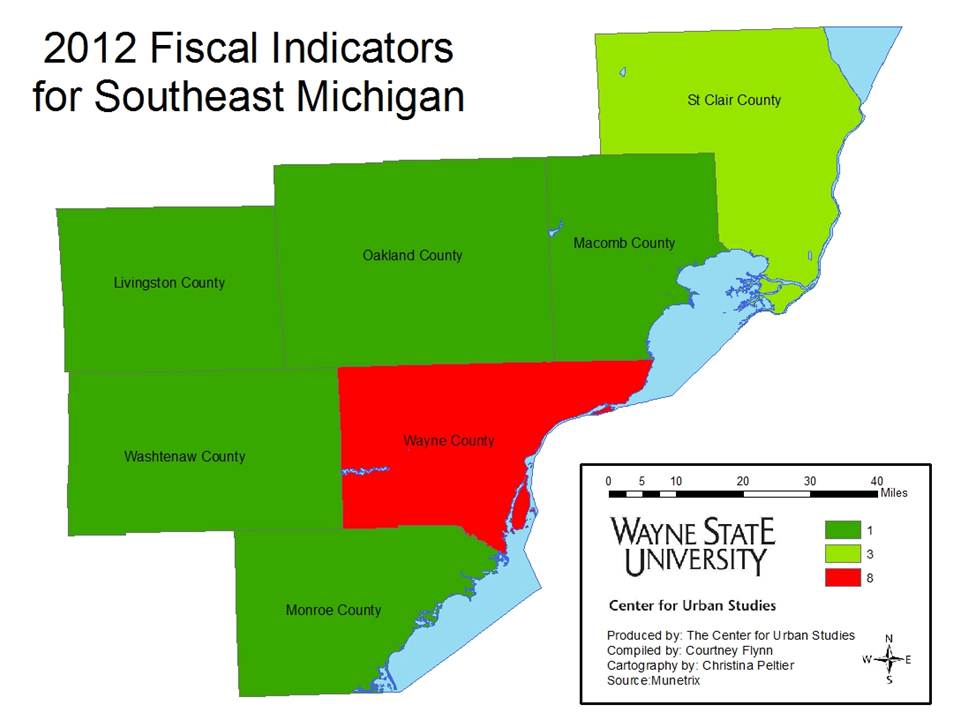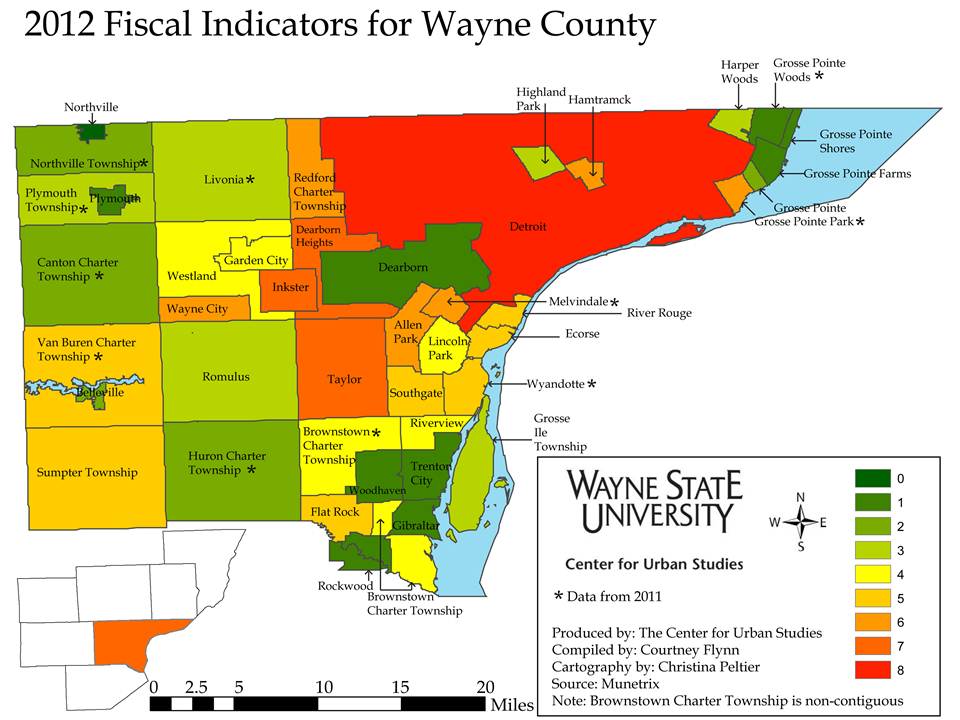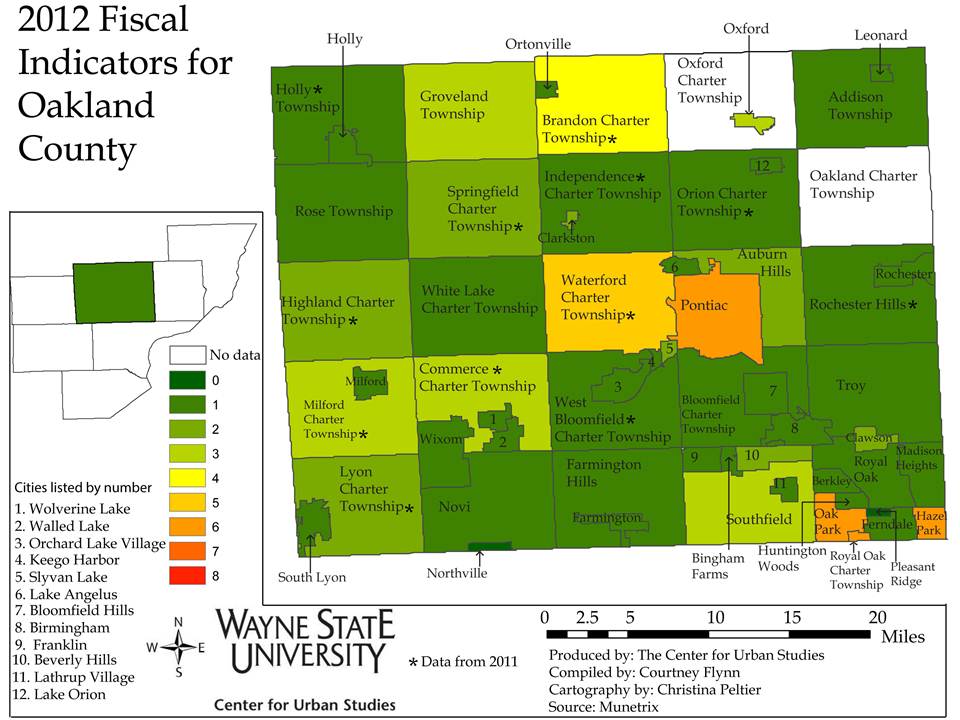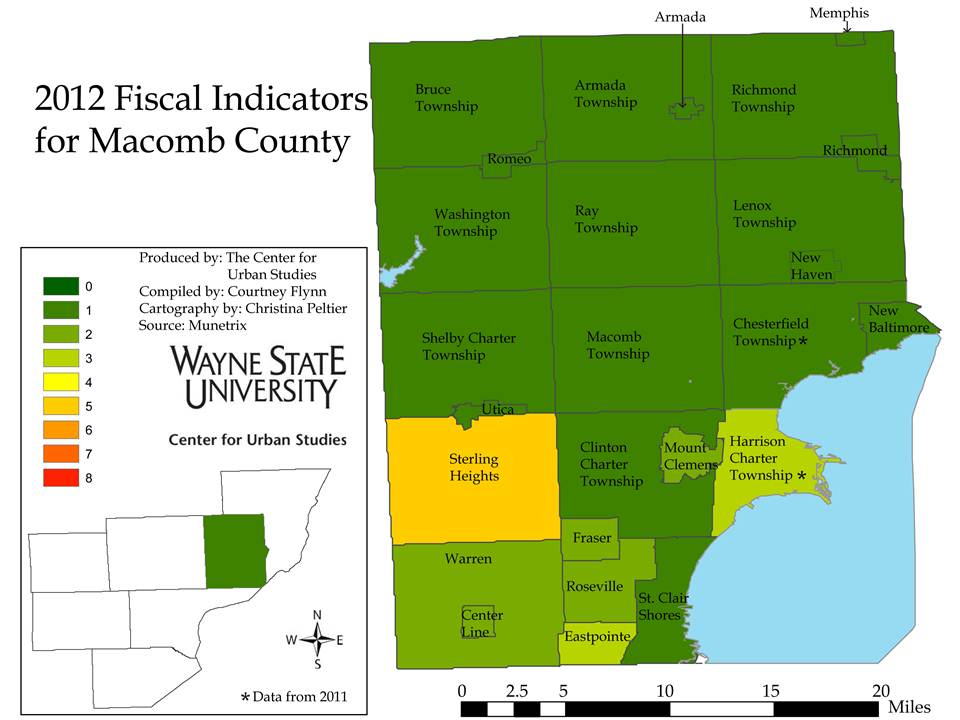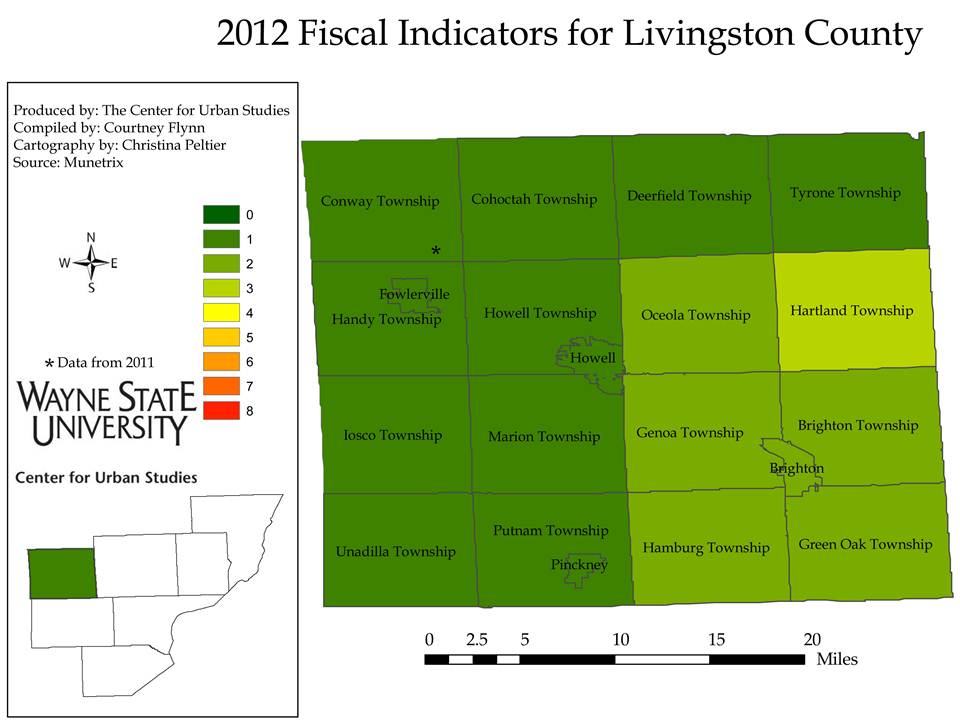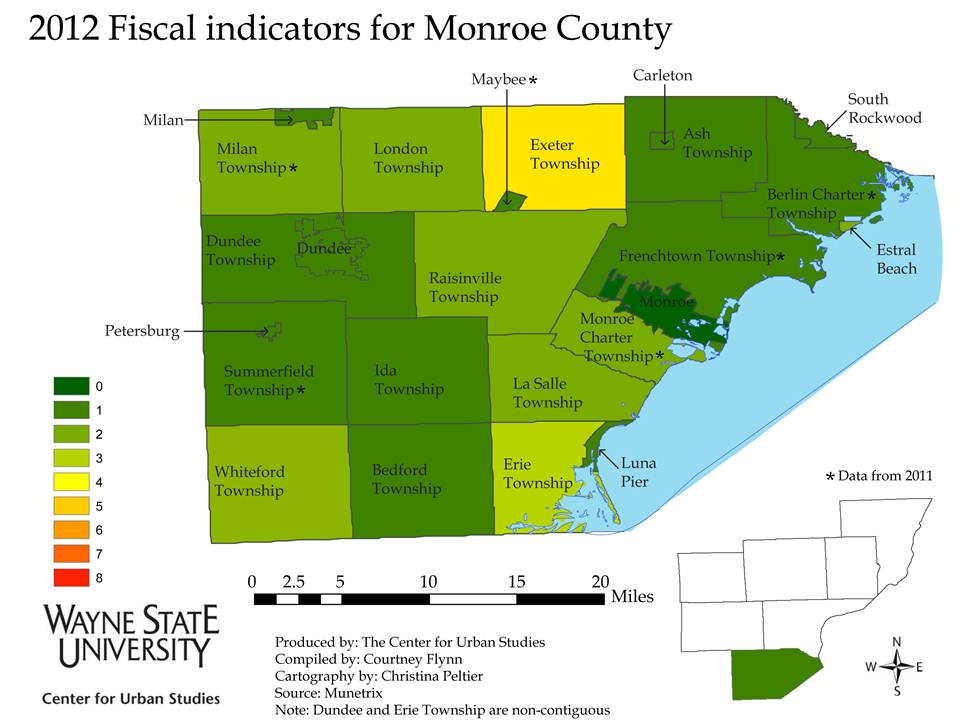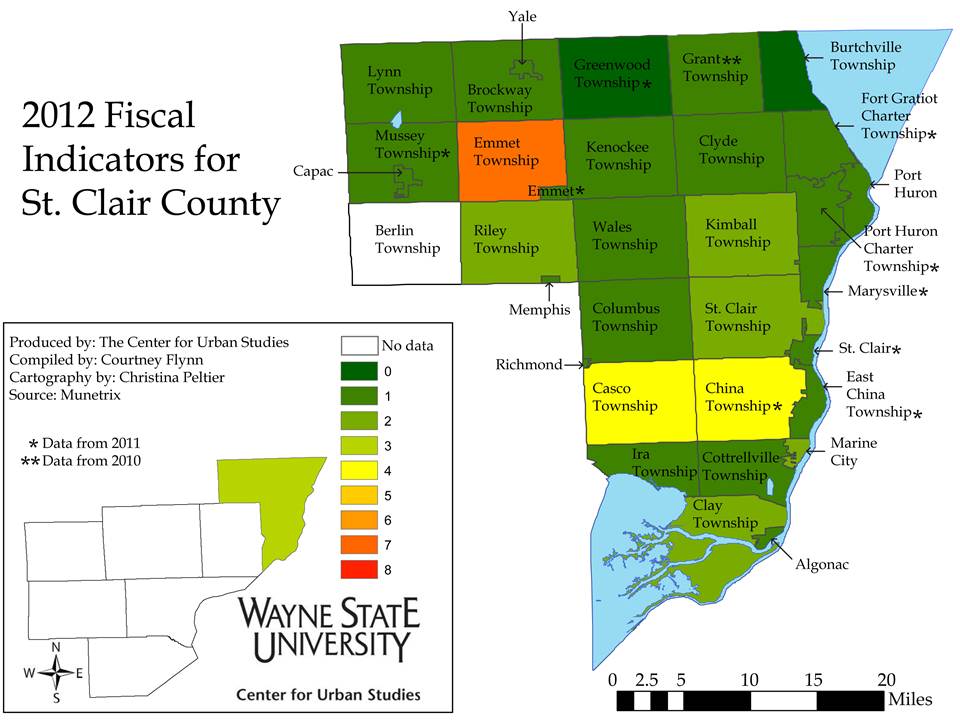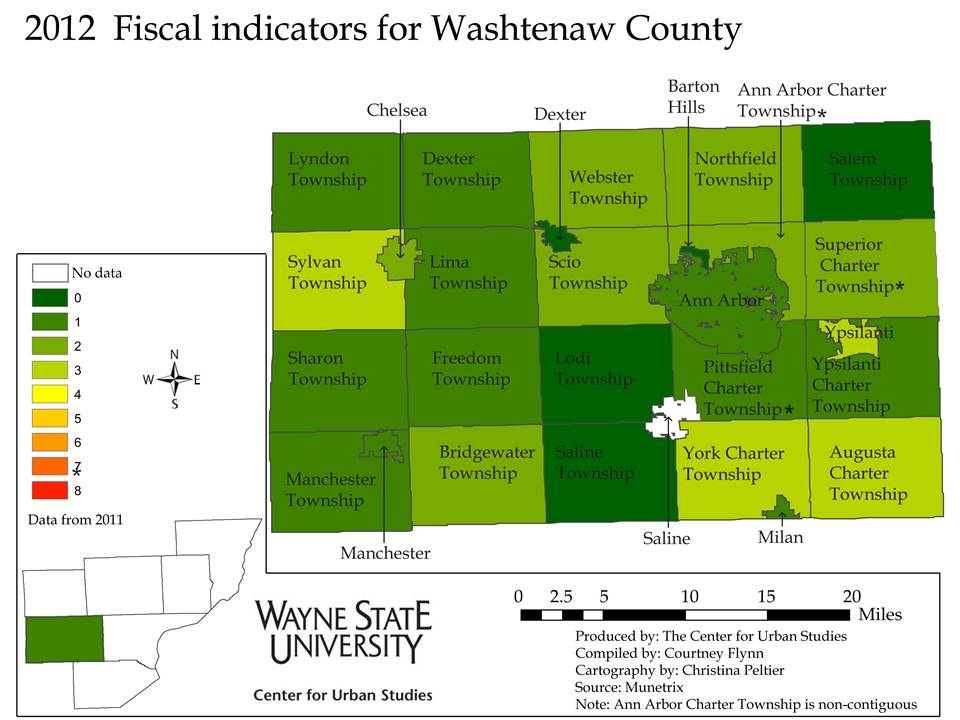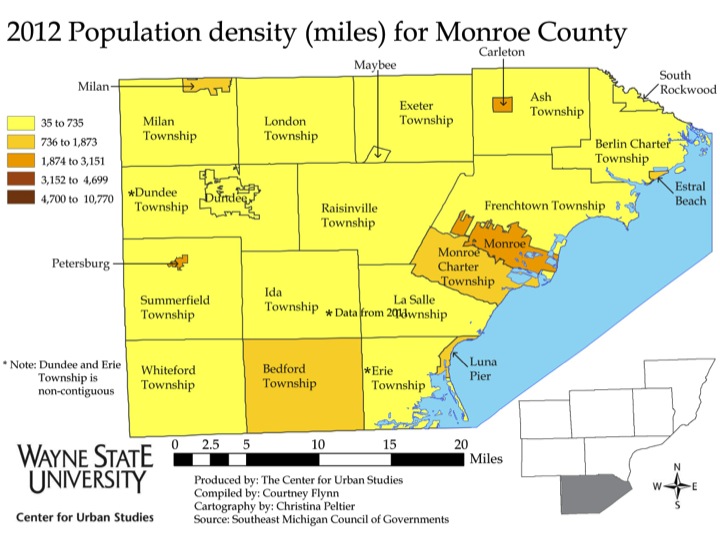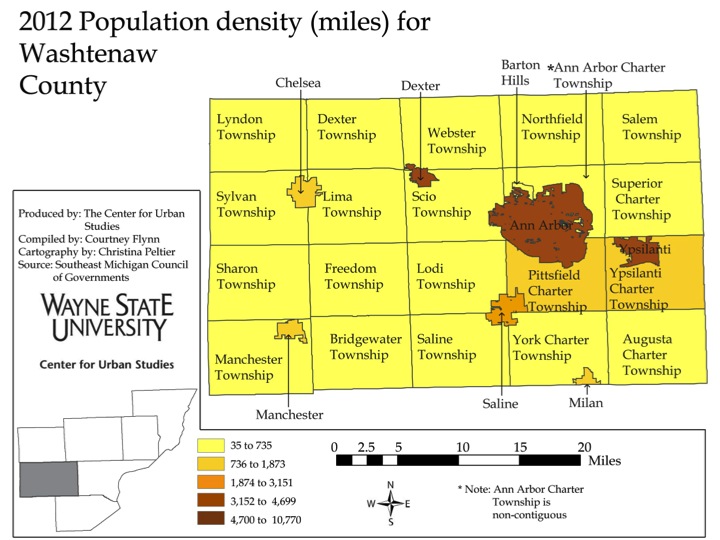In the following post the percent of minorities that makeup Southeastern Michigan is examined. We examine the overall percent of minorities for the region, in addition to showing, through a dot map, the concentration of African Americans, Asians, and Whites in the region. The maps show that the City of Detroit has the highest percent of minorities in the region, particularly African Americans. However, Asians are largely located outside Detroit, though they represent a smaller portion of minorities.
The information shown throughout this post was obtained from the 2011 American Community Survey, which was based on five year estimates. For the total minority maps the following races are included: African American, Native American, Asian, Pacific Islander, other races and two more races.
The City of Detroit is predominantly minority, the majority of which are African American, according to the 2011 American Community Survey. While not every neighborhood of Detroit was predominantly minority, there were several-Northwest, Barton-McFarland and portions of the east, west and northeast sides-where 100 percent of the residents were identified as minority. Other areas in the region where the population was made up of between 81 and 100 percent minorities were Pontiac, Inkster, Highland Park and River Rouge.
When looking beyond the City of Detroit, the percent is much lower. For example, nearly all of Livingston, St. Clair, Monroe and Macomb counties are made up of 0-20 percent minorities. When looking at the dot map depicting where Asians live, it is clear that there are heavy concentrations in the Ann Arbor, Plymouth, Westland, Sterling Heights and Royal Oak. The dot maps that depict the White population show high concentrations just outside of the City of Detroit, in the Grosse Pointes, Lincoln Park and throughout Oakland County.
In next week’s post we will examine the distribution and concentration of various ethnic groups in the region, particularly Hispanics and Arabs.

